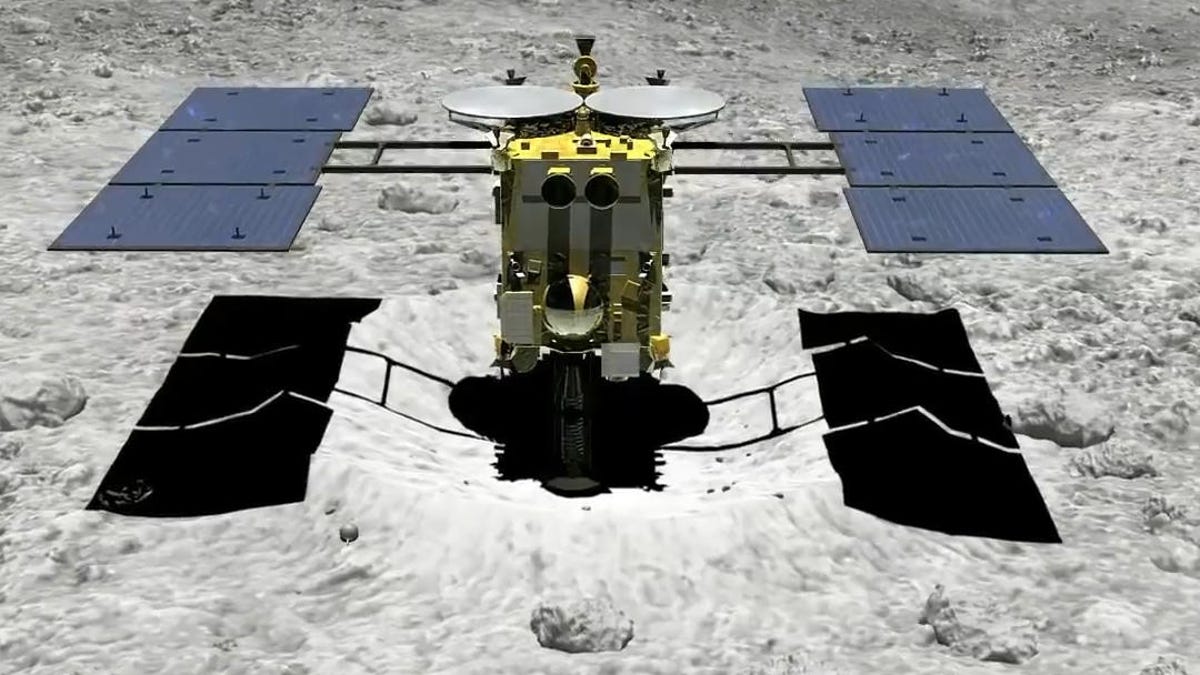Hayabusa2 spacecraft blasted a bus-sized crater into an asteroid
A spacecraft run by the Japanese Space Agency made a lasting impact in the solar system.

An illustration of Hayabusa2 at Ryugu.
Humanity has made a large mark on another world courtesy of the Japanese spacecraft Hayabusa2.
The fascinating Hayabusa2 mission arrived at the asteroid Ryugu in June of 2018. It sent tiny rovers down to explore the space rock and the following February it violently chest-bumped to grab samples for return to Earth before shooting it with a copper cannonball last April.
On Thursday, a new paper published in the journal Science detailed the crater that was created by Hayabusa2's space suckerpunch.
Hayabusa2 went in for a closer look before leaving the asteroid last year and found the impact from the cannonball, which was about the size of a tennis ball, created a semi-circular crater about 10 meters (33 feet) wide, or roughly the width of a bus.
This sequence of images shows the ejecta thrown out of the artificial crater. Images were taken 185s before the impact and 3s, 5s, 36s, 100s, 192s, 396s and 489s after the SCI collision. The right image is an enlargement of the left. (📷 JAXA, Kobe University and collaborators.) pic.twitter.com/GFtFCDf0bg
— HAYABUSA2@JAXA (@haya2e_jaxa) March 20, 2020
The paper explains how the blast displaced a number of boulders "with sizes of at least tens of centimeters" and dug up a particularly big rock 5 meters (16 feet) across and tossed it to the side. There was another big boulder that didn't budge, however, leading researchers to suspect it may be buried deep beneath the surface of the asteroid.
The data gathered from the creation of the new crater also helped researchers estimate that Ryugu is probably around 9 million years old and its broader surface is generally "composed of sand-like cohesionless material."
Next up, Hayabusa2 is set to return its samples with a landing in the Australian outback by the end of 2020, when we'll finally be able to get our hands on some of that spacey, sandy cohesionless material.

